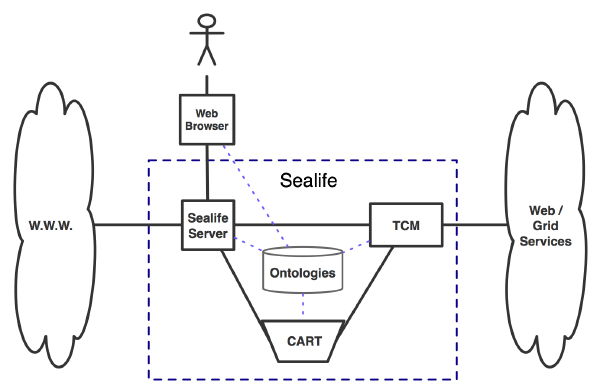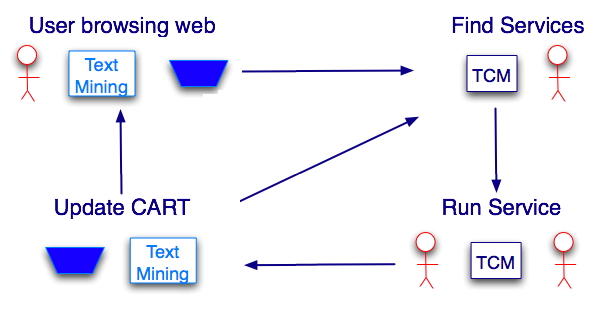BISEL
Biomedical Informatics Systems Engineering Laboratory
TCM - Task Composition Manager
Sealife Home | TCM | GGAPS | Argumentation | Evaluation | Publications
Integral to the concept of a semantic web browser is the ability to link the current web to the emerging life science infrastructure. This task was performed by the team at Heriot-Watt University in a module called the Task Composition Manager (TCM), which performed for service discovery and execution. The following image shows how the TCM links into the other Sealife components:

When the user browses the a web page, text mining is used to identify biological terms and turn them into Semantic Hyperlinks - these enable a term to be added to the CART. One the user has added terms to their CART, they can ask to see services relating to these terms. For example, if the CART contains the gene BMP4, then Sealife may ask the user if they wish to BLAST the gene, or discover where it is expressed. It is the responsibility of the TCM to find suitable services based on the items in the CART, and then run the user's chosen service. The output can be placed in the CART, to be used in future service discovery. This is summarised in the following diagram:

The service discovery and execution were carried out using components from the myGrid project. Those tools require the use of a proprietary ontology and series of service descriptions. The creation of the TCM and the issues discovered in its creation are documented in: Semantically Linking Web Pages to Web Services in Bioinformatics. Paper in Proceedings of 3rd International AST (Applications of Semantic Technologies) Workshop 2008. Karen Sutherland, Kenneth McLeod and Albert Burger (Download PDF).
To enable more direct user interaction for service discovery, whilst distancing them from the technical details, a form of plan recognition and HTN planning has been investigated. See the GGAPS page for further information.
By linking resources, the contradictions between them becomes apparent. Argumentation was explored as a solution to this problem. For more details see the Argumentation page.
Click on the link below to visit the SEALIFE Project website:
http://www.biotec.tu-dresden.de/SEALIFE